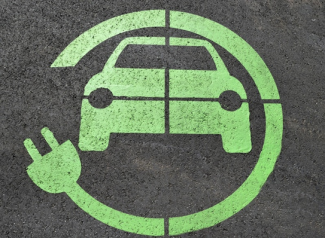NETL researchers have created a compact, portable device that can be used to detect cobalt at low concentrations in liquids, such as process streams from U.S. coal byproducts like fly ash and to prospect for cobalt in acid mine drainage – an innovation with financial, environmental and geopolitical implications for recovering the element that is currently produced mostly in the Democratic Republic of Congo, China and Zambia.
Coal byproducts are materials like fly ash, bottom ash, boiler slag, flue gas desulfurization sludge and fluidized bed combustion ash.
Cobalt is a chemical element found in the Earth’s crust. It has been used for centuries to add a rich blue color to glass and ceramics and has been found in artifacts like ancient Egyptian sculptures, Persian jewelry from the third millennium BC, the ruins of Pompeii, and in China in creations from the Tang and Ming dynasties. Today, cobalt is used in making alloys for aircraft engines and in lithium batteries for many electric vehicles and consumer products like cell phones, laptop computers and tablets.
The primary working components of lithium-ion batteries in electric vehicles and consumer products are the anodes and the cathodes. Cobalt is incorporated into cathodes to prevent them from overheating or catching fire and helps extend the life of the batteries. It is also the most expensive component in terms of total material costs for the batteries.
Researchers have discovered that coal byproducts can be a source for the sought-after element, but the low concentrations of cobalt in those byproducts make it difficult to detect during processing to recover the element. Analyses of the process streams can be expensive because it traditionally requires use of an inductively coupled plasma mass spectrometer, an instrument that can cost up to $100,000 and is typically too big to take outside the laboratory.
That’s where NETL researchers Scott Crawford, Ki-Joong Kim and John Baltrus come in. They created a rapid, inexpensive, and portable characterization technique that can reduce production costs associated with cobalt process monitoring, better enabling use of coal byproducts as a source for cobalt.
“The portable system responds nearly instantly to the presence of cobalt with detection performance comparable to a commercial fluorescence spectrometer at significantly lower costs,” Crawford explained.
Kim added that the NETL sensor, “is selective for cobalt in the presence of 13 of the most common metal ions encountered in coal byproducts. It was tested by detecting cobalt when spiked into an acid mine drainage leachate sample. That highlights the sensor’s potential for real-world deployment in challenging environments.”
Baltrus said the team built upon the initial innovation to create another potential product: a test strip sensor that exhibits a selective and sensitive visual response to cobalt using a handheld ultraviolet lamp.
“Taken together, these sensing systems represent a significant step forward in the development of low-cost practical sensors for high-value metals in complex streams,” Baltrus said.
The systems for detecting cobalt, which is based on a NETL patented portable spectrometer design, was recently described in the Journal of Materials Chemistry C.
The NETL system uses carbon dots that are co-doped with phosphorus and nitrogen-containing molecules as the sensing materials. Carbon dots are carbon nanoparticles that are less than 10 nm in size, and themselves can be derived from coal. Because of their outstanding physical and chemical properties, carbon dots are used in a wide range of applications from drug delivery, explosive detection and chemical sensing to food safety, bioimaging, and energy conversion. In chemistry, doping is the process of introducing impurities into a sample to change its electrical properties.
According to The Cobalt Institute, electric vehicles are accelerating cobalt demand, consuming 59,000 tonnes, or 34% of the global total in 2021. The institute predicts that cobalt demand will continue rising rapidly as the electric vehicle transition progresses. The institute estimates that 70% of coming growth will be from the electric vehicle sector.
About 74% of mined supply comes from the Democratic Republic of Congo and 72% of the total production is refined in China. Both countries have faced accusations of environmental and human rights abuses associated with cobalt mining. Most of the world’s cobalt, 98%, is produced as a byproduct from large-scale copper and nickel mines. The remaining 2% is extracted alone in Morocco and from some Canadian arsenide ores.
The Cobalt Institute estimates that cobalt will be one of the main objects of geopolitical competition in a world running on renewable energy and dependent on batteries. Being able to use U.S. coal byproducts as a source for cobalt could put the nation in a better position to deal with that geopolitical competition.
NETL is a U.S. Department of Energy national laboratory that drives innovation and delivers technological solutions for an environmentally sustainable and prosperous energy future. By using its world-class talent and research facilities, NETL is ensuring affordable, abundant and reliable energy that drives a robust economy and national security, while developing technologies to manage carbon across the full life cycle, enabling environmental sustainability for all Americans.




